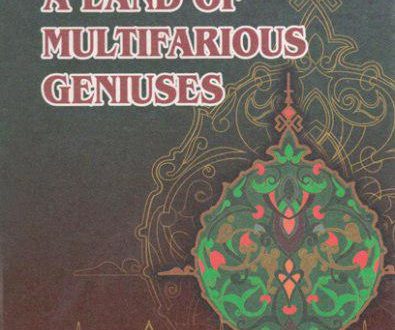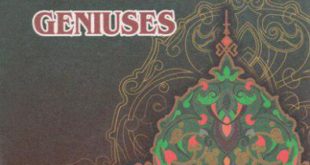As “Hidaya” is acknowledged by experts as a perfect and original book both in its structure and content reflecting the teachings of the Hanafian school of law, the works in the later periods were written in its style of expressing the legal notions.
As was acknowledged by an Indian scholar Aziz Ahmad in his hook “The history of the Islamic thought in India”, during the reign ol Ghiyasiddin Tughluq, the decisions of the Hanafian law were prior to the decisions based on Hadiths, and the ruling laws in the country were based on the Holy Qur’an and the laws of the I lanafian order. His son and successor Muhammad ibn Tughluq had a good and perfect education on “Hidaya”.
According to the information provided by the author, the two ‘‘.icat works “Fiqhi Feruzshahi” and “Fatavai Tatarkhaniya” by Alim ilm Ala written during the reign of Feruz Tughluq with the insistence and support of Tatarkhan were created during 1351-1388 under the influence of the style of “Hidaya”. Moreover, it is note-nthy to mention that the famous legal works written during the it it periods in India were created under the direct influence of I lidaya”. Among them,we can mention famous “Fatavai Ibrahim-shahi” and the four volume legal code of the reign of the Baburid kings of India “Fatavai Alamgiri”.
“Fatavai Alamgiri”, also known as “Al-Fatavai al-Hindiya”, was created with the insistence and under the personal control and support of the greatest Emperor of the Baburid India Avrangzeb Alamgir. A group of lawyers consisting of 24 people wrote the code consisting of 4 volumes and 3500 pages under the leadership of Nizamuddin Burhanpuri (Sheikh Nizam). This code served as a source in solving the legal matters and in the governance of the country as a main source of law.
In 1889, this legal code was translated into Urdu and published in Laknahu. In 2000, this important legal document was published in Beirut by the society “Dar ul-kutubi-l-ilmiya” under the title of “Al-Fatava al-Hindiya” in 6 volumes. Some samples of the manuscript of this legal code are preserved in the scientific library of the Institute of Oriental Studies named after Abu Rayhan Beruni, in Tashkent.
Relying on the above-mentioned facts and information, we can assume that even today “Hidaya” is remaining as one of the most important sources of the Islamic law, especially of the Hanafian order of Islam, and despite their faiths and beliefs, the lawyers have faced and taken into consideration the ideas and teachings of “Hidaya” in their legal careers. Therefore, many commentaries both in full and in shortened forms have been written by the competent specialists and experienced experts.
A well-known figure in this field Taju-sh-Shariah Mahmud ibn Sadru-sh-Sharia I shortened “Hidaya” for his grandson Sadru-sh-Shariah Ubaydulla ibn Mas’ud II of Bukhara. He titled the shortened version of “Hidaya” as “Viqayatu-r-rivoya fi masaili-l-Hidaya” and expressed the following appreciation in its preface: “”Al-Hidaya” is a tender work of high status, it is an ocean that excites anyone, a precious source of high estimation. It is important for its proofs and explanations, a book worth of pride for its pleasant and stylishly written phrases which lead the readers to success and high estimation”.
If to take into consideration the commentaries devoted to “Al-Vaqaya” (the shortened version of “Hidaya”) and its shortened version “Mukhtasaru-l-viqaya”, the number of the commentaries devoted to “Hidaya” and its shortened versions exceeds 50. If to take into consideration the legal terms, their description, places of usage and other notes written on the margins of books, so a special investigation on this matter needs to be carried out.
According to the information provided by a German scholar Brokkelman in his book “The History of the Arabic literature”, 43 commentaries were written on Imam al-Bukhari’s “Al-Jami as-Sahih” which is estimated and appreciated as a sacred source occupying the second place after the Holy Qur’an in the Islamic world. As has been mentioned by a scholar Ahlvard,the list of manuscripts preserved in Berlin contains 60 commentaries on this book. Therefore, we may conclude that al-Marghinani’s “Hidaya” is a second book after al-Bukhari’s “Al-Jami as-Sahih” to have been written the most commentaries on. This fact proves how precious and important book “Hidaya” is from the practical and scientific points of view.
Now we would like to draw your attention to the idea expressed by al-Marghinani’s student and follower Burhanu-l-Islam az-Zarnuji. In his book “Ta’limu-l-mutallim”, he cited a verse of the following meaning: “A great Imam and my master, the author of “Hidaya” recited me the following verse:
“A scholar who has not authority and estimation among his colleagues and public will produce only harm and intrigues. A scholar who demands undeserved respect and estimation may produce more dangerous harm and intrigues than those. Anyone who follows him according to the de mands of his faith may come iu ross greater intrigues”. Besides, my teacher said: “There must never be an interruption in the course of studies because it leads “lie to great losses. I have never let the interruptions happen in my indies, and therefore I have left my contemporaries behind”.
 Imom Buxoriy xalqaro ilmiy-tadqiqot markazi bukhari.uz
Imom Buxoriy xalqaro ilmiy-tadqiqot markazi bukhari.uz











